KB5053606 not installing on Windows 10 is a nasty issue. If you wish to install this update to fix some issues such as broken SSH connections, etc., an update error or stuck issue blocks you. Now discover some effective ways from this MiniTool’s guide to address the installation issue.
Windows 10 KB5053606 Fails to Install
Microsoft’s March 2025 Patch Tuesday, KB5053606 was released for Windows 10. It brings some bug fixes, for example, OpenSSH service not starting and stopping SSH connections, Dwm.exe not responding, Input Method Editor (IME) issues, etc. However, KB5053606 not installing could happen when attempting to get this update via Windows Update.
During the downloading or installing phase, the process gets stuck. Or an error code shows on the screen, such as 0x800f0922, 0xd0000034, 0x80070437, and 0x80072efe, etc.
In most cases, you cannot install KB5053606 due to several possible reasons, such as Windows Update components malfunctions, corrupt system files, insufficient disk space, third-party software conflicts, and so on.
Fortunately, there is a comprehensive guide to walk you through a few workarounds to address the issue of KB5053606 not installing on Windows 10.
MiniTool ShadowMaker TrialClick to Download100%Clean & Safe
Basic Checks
Successfully installing KB5053606 requires your PC to have a reliable network connection to ensure a smooth download process of update files from Microsoft’s server and enough disk space to store the update files.
You can access fast.com to check the network speed or run the ping google.com –t command in Command Prompt to see if there is any packet loss.
If your disk size in the C drive is not enough, try to free up some space. To do this thing, use the professional PC tune-up software, MiniTool System Booster to easily clean up the system, uninstall unwanted apps, and defragment your hard drive to get much disk space. Besides, this software also speeds up your Internet. Download and install it, then get started.
MiniTool System Booster TrialClick to Download100%Clean & Safe
In addition, consider removing all the unnecessary external devices from your PC to avoid conflicts that lead to KB5053606 not installing. Apart from basic checks, now it is time to use some troubleshooting tips to solve your issue.
Way 1: Run Windows Update Troubleshooter
Windows Update Troubleshooter built into Windows 10 could detect and repair common issues that stop updates from installing properly. It can act as an effective step if KB5053606 fails to install on the PC. So, run this diagnostic tool via these steps:
Step 1: Navigate to Settings > Update & Security.
Step 2: In the Troubleshoot tab, hit Additional troubleshooters.
Step 3: Highlight Windows Update and then click Run the troubleshooter.
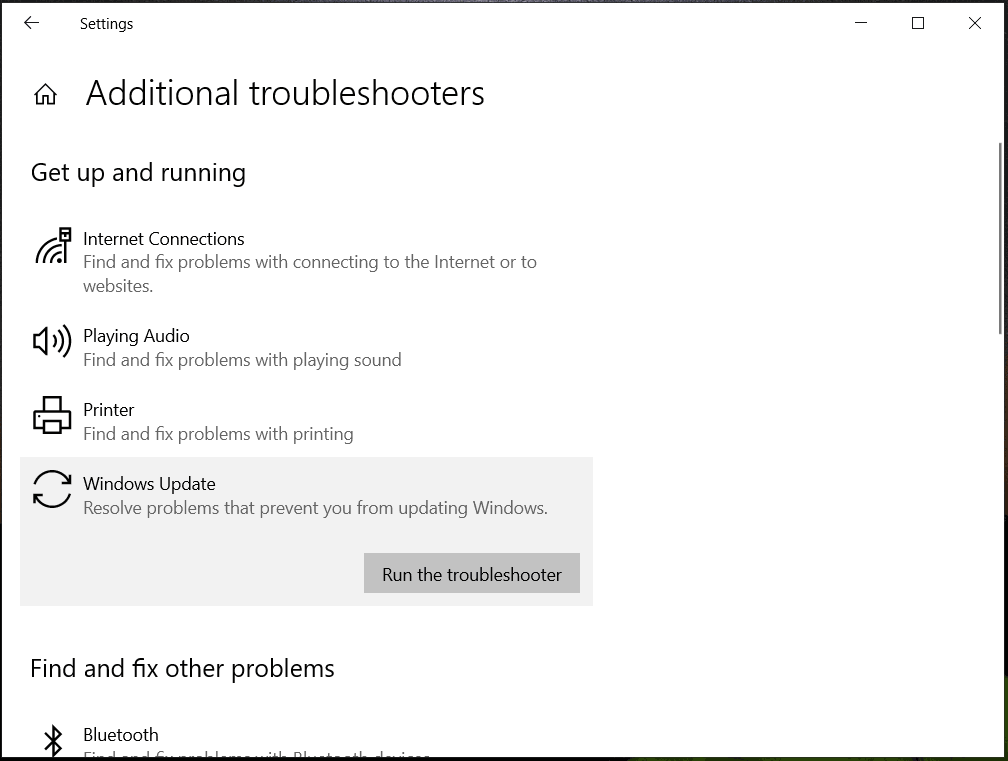
Step 4: This tool begins identifying and repairing found problems.
Way 2: Reset Windows Update Components
Windows 10 KB5053606 not installing may occur because of misconfigured or corrupt update components, for instance, the update cache or services. Typically, resetting those components does the trick. Here is a full guide on how to reset Windows Update components.
Way 3: Clean Boot Windows 10
Clean Boot helps identify the conflicts between third-party software or services and Windows updates, eliminating the issue of KB5050606.
To do so:
Step 1: Press the Win and R keys on your keyboard to open Run, msconfig,and then click OK to access System Configuration.
Step 2: Disable all the third-party services under Services by checking Hide all Microsoft services and clicking Disable all.
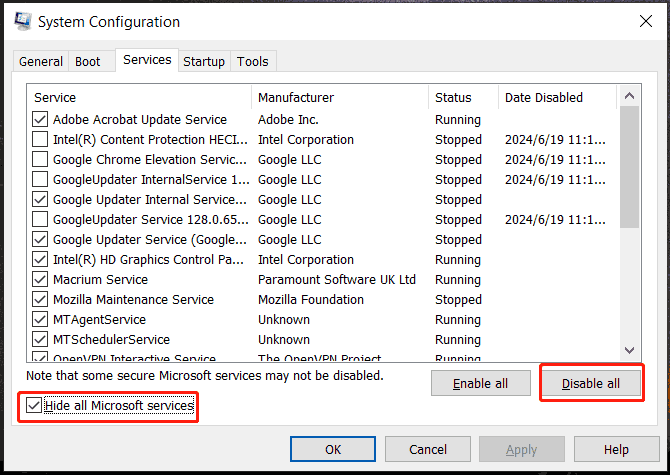
Step 3: Go to Startup > Open Task Manager, disable startup items one by one, and then click Apply > OK in System Configuration.
Step 4: Restart your PC. After that, install KB5053606 in Windows Update again.
Way 4: Run SFC & DISM
Your Windows 10 PC may have corrupt system files, resulting in some issues including the installation issue. So, try to repair the corruption in the system using SFC and DISM if KB5053606 fails to install.
Step 1: Open Command Prompt with admin permissions.
Step 2: In the CMD window, execute the sfc /scannow command.
Step 3: Next, paste the following commands in order and press Enter.
Dism /Online /Cleanup-Image /CheckHealth
Dism /Online /Cleanup-Image /ScanHealth
Dism /Online /Cleanup-Image /RestoreHealth
After the scan, check for updates and install KB5053606 again.
Way 5: Manually Download KB5053606 to Install
If none of these above methods fail to solve Windows 10 KB5053606 not installing, manually downloading this update and installing it will work.
Take these steps now:
Step 1: Visit the website of Microsoft Update Catalog and search for KB5053606.
Step 2: Download the corresponding installation package (.msu) based on your system.
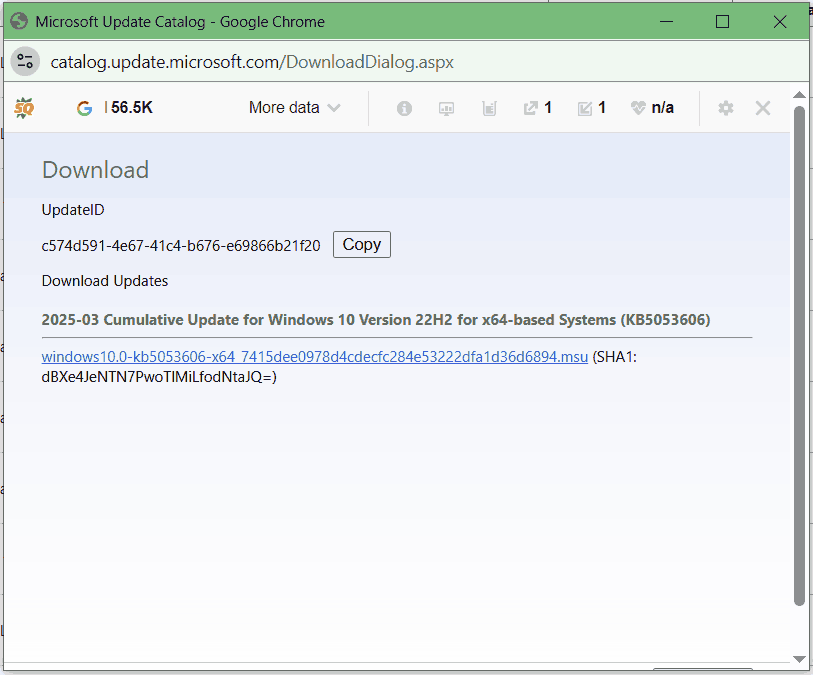
Step 3: Run the .msu file to begin the installation process.
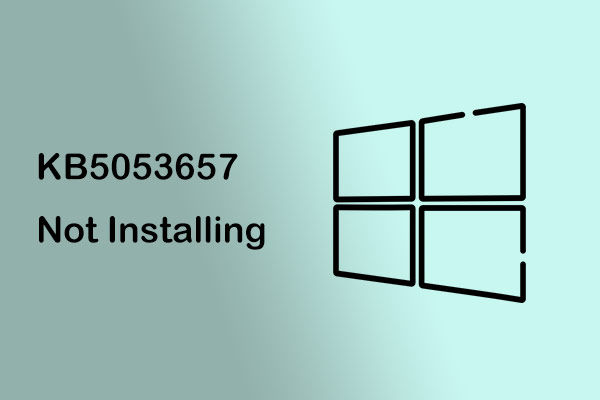
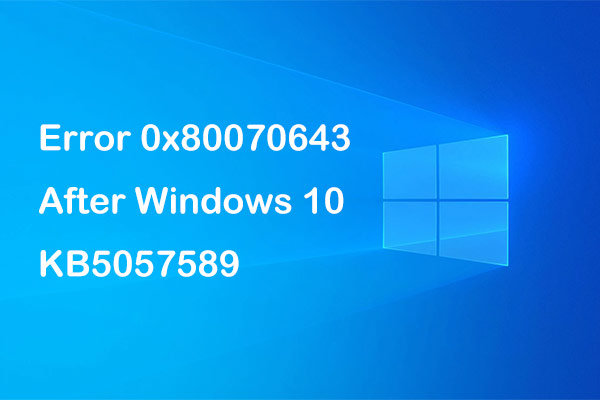
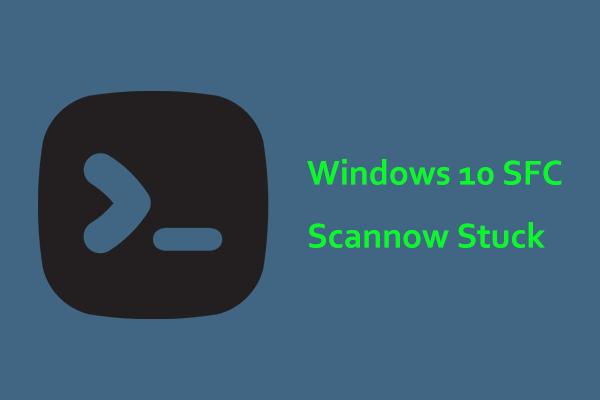
User Comments :